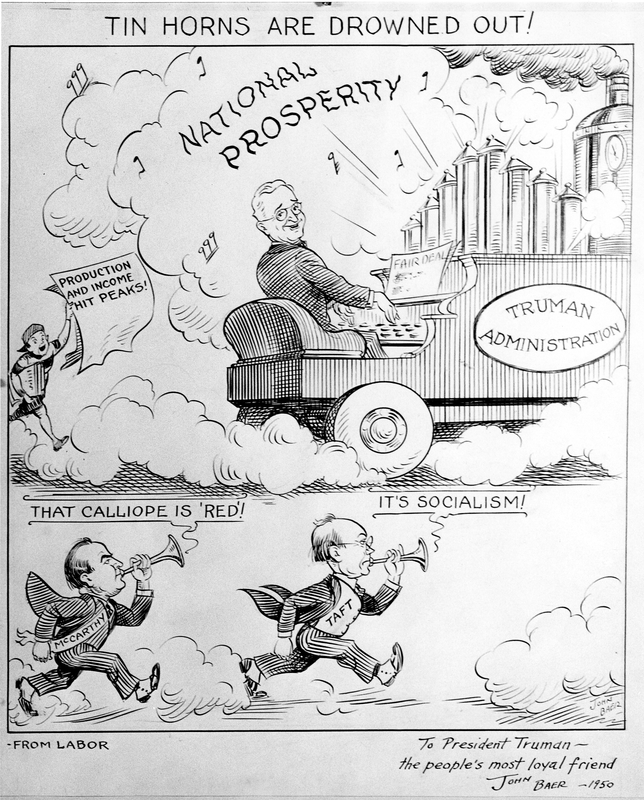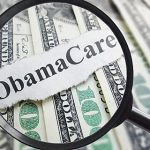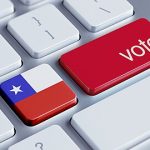
After an interruption due mostly to my move to Spain, I’m pleased to be back in the saddle again, wrapping up my series on the New Deal.
I ended a previous installment of this series by observing that, despite many dire forecasts, the U.S. economy avoided a severe, post-World War II depression, and “appeared to do so with very little help from the federal government.” In particular, while the federal government drastically reduced its military expenditures as soon as the war ended, it didn’t make up for that reduction with any corresponding increase in public works or other peacetime spending. Yet instead of slumping again, the economy saw its first investment boom since the ’20s.
So much for postwar fiscal policy. But what about monetary policy? Might the postwar economy have been kept humming with the help of generous doses of easy money? Could that have been all it really needed to prosper again?
These questions seem worth asking for at least two reasons. First, as we’ve seen, the partial recoveries that took place during the mid- and late 1930s were themselves mainly due not to fiscal stimulus but to monetary growth fueled by heavy gold imports. So it’s only reasonable to wonder whether monetary expansion was also the key to the economy’s postwar performance. Second, postwar Fed policy appears to have been exceedingly easy, having mainly consisted of the continuation, up to the famous Treasury Accord of March 4, 1951, of the Fed’s wartime commitment to keep interest rates low by propping-up the prices of various Treasury securities.
Before the Accord
That U.S. monetary policy was easy during World War II no one denies. At first, gold flows remained the main driver of monetary expansion: indeed, thanks to the “cash and carry” policy adopted soon after the war began, which allowed U.S. merchants to sell war materials to Britain and other nations at war with Germany provided they paid in cash, gold flooded into the United States like never before. In just two years, the U.S. monetary gold stock grew by $5.5 billion. During that same time, the Fed’s government security holdings hardly budged, and banks hardly borrowed from it. So it was entirely thanks to all that gold that the U.S. monetary base grew by about $3.35 billion, allowing the (narrow) money stock in turn to expand by about $13 billion.
The passage of the Lend-Lease Act of March 1941, allowing the allies to get war supplies from us gratis, or nearly so, caused the gold inflow to quickly taper off. But once the United States itself went to war, Fed officials determined “to use its powers to assure at all times an ample supply of funds for financing the war effort.” The result was a set of new policies that became a far more potent cause of monetary stimulus than gold imports had ever been.
Of those changes, the most important consisted of the Fed’s formal agreement to buy as many 3-month Treasury bills as it had to to keep the rate the Treasury paid on them at just three-eighths of one percent. The Fed also offered, though informally, to keep the interest rate on 25-year Treasury bonds at 2.5 percent. Once these agreements went into effect, in the summer of 1942, instead of pursuing monetary policy in the usual sense, the Fed, in the words of Chairman Eccles, “merely executed Treasury decisions” (Meltzer 2003, p. 579).
As a result of these arrangements, the Fed went on to purchase very large amounts of Treasury securities, expanding the monetary base and total money stock correspondingly. The last grew more than 20 percent in both 1942 and 1943, and by not much less than 15 percent during 1944 and 1945. Thanks to wartime price controls, posted consumer prices only rose by about 11 percent during this same period. But no one doubted that they would rise a lot more once those controls were lifted.
Yet the Fed’s interest-rate pegging went on for several years after the war ended. Although the Fed’s formal agreement to peg the bill rate ended in 1947, and that rate quickly rose to one percent, and eventually rose even more, rates on longer-term Treasury securities never exceeded their wartime targets until the Treasury Accord went into effect. It’s therefore not at all implausible to suppose that long rates were kept below their “natural” levels during this time, and that (as many theories suggest) those low rates gave an artificial boost to investment spending.
In short, it’s tempting to think that, while postwar fiscal policy fell well short of Keynesian economists’ recommendations, easy money stood in for it, playing an outsized part, not just in helping the U.S. economy steer clear of a postwar depression, but in fueling the postwar investment boom, albeit at the cost of a later, if still not very severe, recession.
Not So Easy
But this is another of those temptations that needs resisting. For starters, it’s worth noting that the same Keynesians who had been so keen on fiscal stimulus saw no corresponding advantage in easy money policies. The view then prevailing amongst them, Alan Meltzer observes (2003, p. 607), “was that monetary policy had, at most, modest effects on output and prices.” Consequently, they neither recommended nor promoted a postwar, easy money policy, so that, assuming the Fed really did pursue such a policy, it did so for reasons other than the standard macroeconomic ones that are widely recognized today.
Although he became a Keynesian with little help from Keynes, Fed chair Marriner Eccles’ views on the respective roles of fiscal and monetary policy resembled those of most Keynesians of his era: while he had long favored aggressive deficit spending to combat depression, it was his opinion regarding the futility of trying to do the same by means of easy money that prompted Representative Goldsboro’s famous remark about “pushing on a string.” Eccles was also a thoroughgoing inflation hawk, who considered an “inflated money supply” the fundamental cause of rising prices. If he allowed the Fed to cooperate with the Treasury during the war, it was for patriotic reasons, and not without frequently criticizing the Treasury’s heavy borrowing.
Of course, neither Eccles’s views nor those of Keynesians generally ruled out the possibility that monetary policy remained as easy after the war as it had been during it for reasons apart from their advice. Then as in more recent times Fed officials worried that rate increases would harm bond holders and worsen the deficit. And the fact remains that rates weren’t allowed to rise, except to a very limited extent, until 1950. But plenty of other evidence suggests that, although rates stayed low, after the war ended, those low rates were no longer a symptom of an easy money policy.
How could that be so? The explanation lies in the change in the amount the government borrowed. During the war it borrowed heavily, and rates were held down despite this by means of a combination of substantial Fed purchases of Treasury securities and the government’s (apparently credible) commitment to take steps to avoid postwar inflation.[1] In contrast, after the war rates stayed low with little help from the Fed, because, instead of borrowing more, the government started paying off its wartime debt. Between the start of 1946 and the end of 1948, the Federal government’s outstanding interest-bearing debt declined by $37 billion, from $227 billion to $190 billion. During that time, the amount of the debt held by the Fed hardly changed. “In actual practice,” the IMF’s I.G. Patel (1953, p. 82) observed several years later,
it would be a mistake to think that the Federal Reserve Banks’ open market operations in support of the bond market led to any steady monetization of the public debt. Except for two periods (1947-48 and the first months of the Korean war), the Federal Reserve Banks were, in fact, able to reduce their portfolio of government securities.
Nor were the exceptional periods Patel mentions ones during which the Fed might be said to have relapsed into its wartime, easy money ways. During the first, although its Treasury bond holdings rose from $1.5 billion to $11 billion, it offset all but $1 billion of this increase by selling shorter-term securities; and as soon as Fed officials recognized the possibility, during the latter part of that period, that the Fed’s bond purchases were contributing to excessive bank lending, they countered them by imposing higher bank reserve requirements, which they maintained until May 1949, despite the downturn that began some months earlier. When the Fed reentered the bond market during the Korean war, it raised banks’ minimum reserve requirements once again—enough, Patel says, “to reduce potential bank credit expansion by about $12 billion” (ibid., p. 86).
Tight-Money Inflation?
For the rest of that postwar demi-decade, Alan Meltzer (p. 631) observes, “the Fed had little enough to do” to stick to its agreement to keep interest rates from rising above their wartime targets. Indeed, until the Korean war began, its main challenge was one of keeping rates—long-term rates especially—from falling below those targets, as they did frequently. Doing that meant selling rather than buying Treasury securities, which was, as Patel notes, “the reverse of debt monetization” (1953, p. 84). Money growth decelerated accordingly, with annual M1 growth quickly declining from its wartime double-digit levels to less than 6.5 percent in 1946, 5.51 percent in 1947, less than one-half of one percent in 1948, and minus one percent in 1949! Nor did Fed officials mind this, for so far as they were concerned the Fed’s principal postwar duty wasn’t helping the government pay its bills: it was keeping a lid on inflation.
Even so, inflation was a problem. Although controls had kept the observed rate of consumer price inflation below two percent during the last years of the war, once they were relaxed that rate rose quickly, reaching a peak annual inflation rate of over 20 percent for the year starting in March 1946. However, it’s necessary to distinguish here between inflation that consists of prices “catching up” to their equilibrium levels after having been held below them by controls for some time, and inflation that’s the result of an ongoing easy money policy. That the inflation of the latter 1940s was mainly of the last sort is suggested by the fact that, after rising quickly to its spring , 1947 peak, the inflation rate fell off just as quickly. Although the outbreak of the Korean War led to another burst of inflation, its cause was a wave of “scare buying” by a public convinced that the government was about to start rationing goods again, and it also tapered off quickly.[2] That is, it also can’t be attributed to deliberate Fed policy.
Indeed, according to most assessments of that policy, to the extent that it contributed to the postwar behavior of consumer prices, it did so not by keeping money too loose in the immediate postwar period, but by tightening too much in response to both “catch-up” and “scare buying” inflation. Its tightening in the response to the first almost certainly contributed to the 1949 recession, and to the first outbreak of deflation since the ‘thirties. Consequently, despite the fact that the average inflation rate for the whole 1946-1951 period averaged a far from trivial 6.5 percent, Alan Meltzer (2003, p. 582) is quite right when he insists that that during it the Fed “was far from an ‘engine of inflation’.”
Net Investment, Naturally
But might the Fed have been an “engine of investment”? The combination of low nominal interest rates and high inflation during most of the 1946-1951 period meant that real (inflation-adjusted) interest rates were mostly negative, and sharply so during 1946 and 1947. And that happens to be precisely when private net fixed investment suddenly awoke from its decade-and-a-half long slumber. After that, as inflation declined, giving way to deflation in 1949, while nominal rates rose, real rates shot up, and investment fell off again. It sounds, some would say, like a classic case of excess money creation causing an unsustainable investment boom by driving real interest rates below their “natural” levels.
But here once again, appearances deceive. Stepping back to take in the larger picture shows that, despite the 1949 setback, there was nothing unsustainable about the postwar investment revival. Instead, after that setback, which was itself relatively minor, net private fixed investment returned to and soon exceeded its previous postwar high. Moreover, as next chart shows, it continued on that modest upward trend, with only modest interruptions, for almost two decades after the March 1951 Treasury Accord freed interest rates from their former limits. Thus liberated, those rates eventually rose substantially; and because inflation was held in abeyance for most of the next two decades, real interest rates also rose. These developments strongly suggest that the postwar revival of net investment didn’t depend on the Fed’s ability to keep interest rates low.
***
To conclude: neither fiscal nor monetary stimulus played any substantial part in the postwar investment boom. Postwar fiscal policy had as its chief aim reducing the federal debt, and was therefore remarkably austere. Postwar monetary policy had as its chief aim keeping a lid on inflation, which invited over-tightening. Despite their essential conservatism, neither of these policies was so stringent as to have stood in the way of a robust recovery of overall private spending. That was itself no small thing. But if we seek the springs of the pronounced and permanent revival of investment, which was the key to a lasting recovery, we must keep looking.
_____________________________
[1] Mark Toma argues that, during the war, “the Treasury and Fed were implicitly committed to future money growth rates that would be consistent with low long-run inflation and [that the Treasury would] at the same time would restrict the quantity of government bonds that would be covered by the 3/8 percent peg…. In fact, the Fed encouraged limits on the weekly issues of new Treasury bills throughout the pegging period, although Treasury pressure sometimes served as a countervailing force.”
[2] For details see Blinder and Brunet (2021) and sources cited therein.
The post The New Deal and Recovery, Part 21: Postwar Monetary Policy appeared first on Alt-M.





